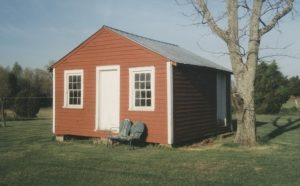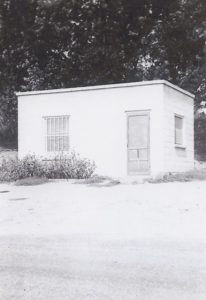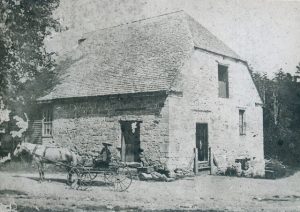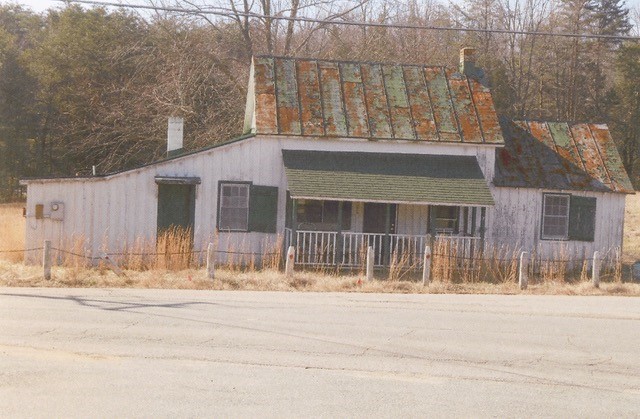Post Offices
We often take for granted daily mail delivery, giving little thought to this vital service unless a problem occurs. Yet daily delivery is a relatively modern convenience that evolved gradually over some two hundred years. Colonial authorities recognized the need for a dependable postal system early on and on March 2, 1693 the Assembly passed a bill encouraging the creation of a postal system for the Virginia colony. The appointed as Postmaster Thomas Neale who was tasked with establishing one or more post offices in each county; one at each of the chief ports; and to fix rates for postage. At that point, Stafford’s official port town was at Marlborough.
During the 19th and early 20th centuries, the postal service grew rapidly. From 1816 to 1847, pre-payment of postage fees was optional. The sender could pay to mail the letter or could choose to let the recipient pay upon delivery. Rates were fixed at six cents per sheet for each one hundred miles. The first official stamps weren’t issued until 1847. Eventually, a delivery fee of two cents per letter was paid by the recipient.
Home delivery of the mail commenced in the late 1920s and until the 1960s, would-be mail carriers placed bids for the job with the United States Postal Service. Bid winners faced the daunting task of delivering mail, in their own vehicles, to remote, thinly populated areas accessed only by treacherous, muddy roads. Compounding the challenge was the mail carrier’s agreement to deliver the mail regardless of the weather conditions.
Not unexpectedly, improvements in transportation resulted in improvements in postal delivery. The first mail deliveries had been conducted by independent riders. By 1785, there were enough moderately passable roads to engage stagecoaches in the mail delivery system. 1813 saw the first use of steamships for mail delivery, a tremendous step forward in Virginia where there is abundant navigable water. In Stafford, the steamships regularly ran between Thorny Point or Aquia Landing on Aquia Creek and Belle Plain on Potomac Creek to Alexandria, Washington, and Baltimore. This continued even after the R F & P Railroad was built north from Aquia Landing in 1872. Use of the steamers continued, even though the first postal contracts had been granted to the railroads in 1835.
1864 marked the birth of the railway post office, which remained standard in Virginia until the first quarter of the 20th century. Postal clerks sorted the mail while riding across the country in special railroad cars. As they passed through the stations, they tossed sacks of mail designated for each town onto the railway platform from the moving train. Outgoing mail was hung in sacks from polls and was snatched from the poll as the train pulled out of the station. Compared to earlier attempts, this was truly modern, high-speed delivery and proved to be quite dependable. Before the era of home delivery, local residents stopped by their nearest railroad station to pick up their mail. For many people, their address consisted of merely their names and the name of the station closest to their homes. The stations in Stafford from north to south were Arkendale (also known as Richland or Brent’s Mill), Aquia (at Aquia Landing on the south side of the creek), Brooke (also known as Accokeek), and Leeland.
Eventually, small post offices were established and scattered all over the county. By dispersing the offices throughout the county, residents could walk or ride to the nearest locations to pick up or mail items. Late 19th and early 20th century applications for new post offices, filed with the U. S. Postal Service, asked for distance and direction of the proposed post office from the nearest railroad station as that was where most of the incoming mail was delivered prior to making it to the actual post office. Some of the post offices of this period were in private homes, but many were in stores and mills as that was where people gathered on a regular basis.
What becomes obvious is that there were a great many more post offices during this period than there are now—nearly fifty in Stafford alone. While home delivery became a reality in the late 1920s, the roads were so poor that it was impossible to deliver the mail to the entire county from one or two post offices. Consequently, the offices were usually five to ten miles apart and, during the first quarter of the twentieth century, mail was delivered two, three, or occasionally four times per week. As late as 1942, the only paved roads in Stafford were the Warrenton Road (U. S. Route 17) and U. S. Route 1. Not until after World War II was Garrisonville Road paved. The rural roads remained unpaved for another ten to twenty years.





